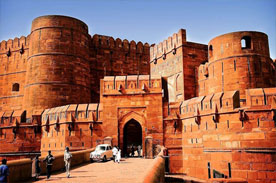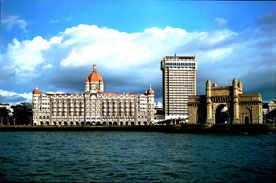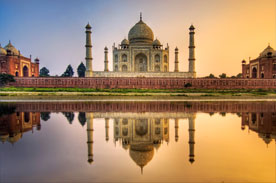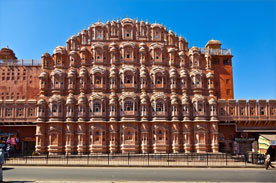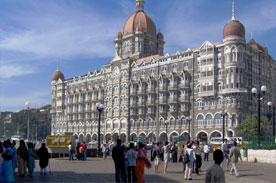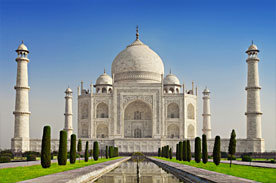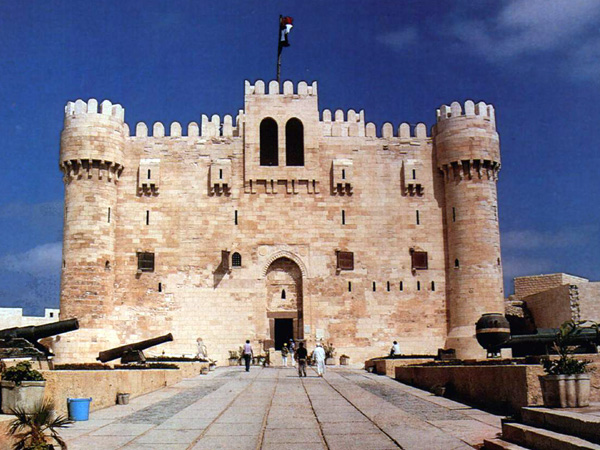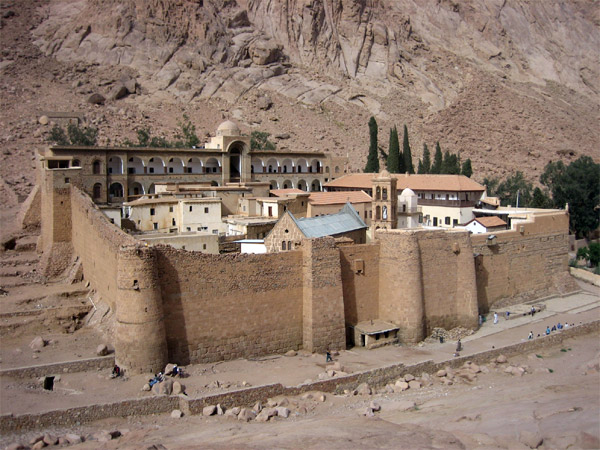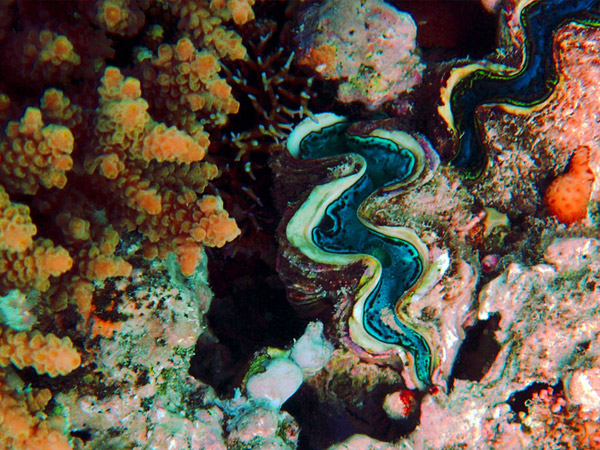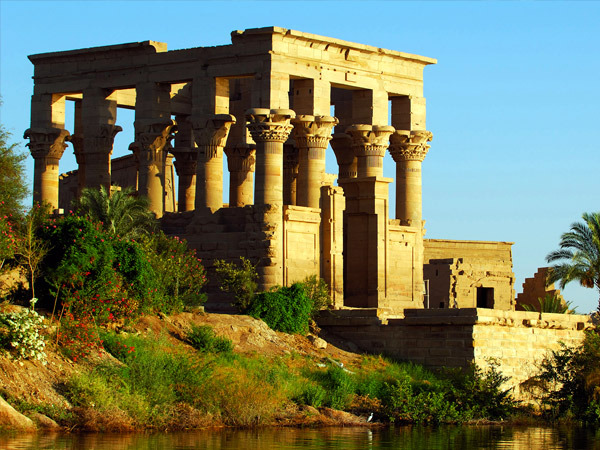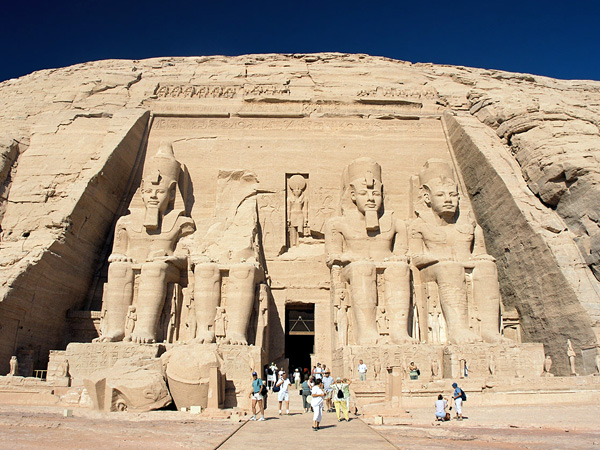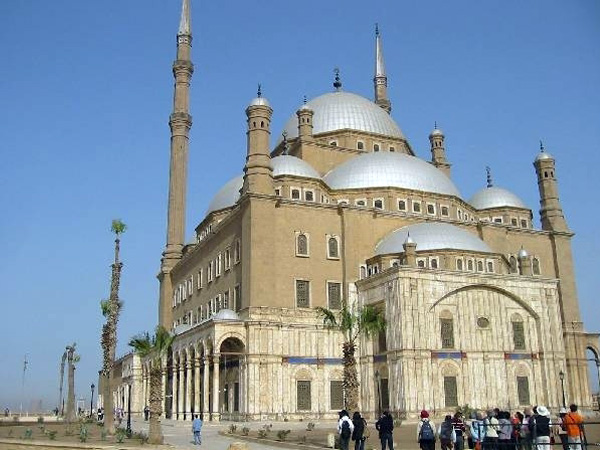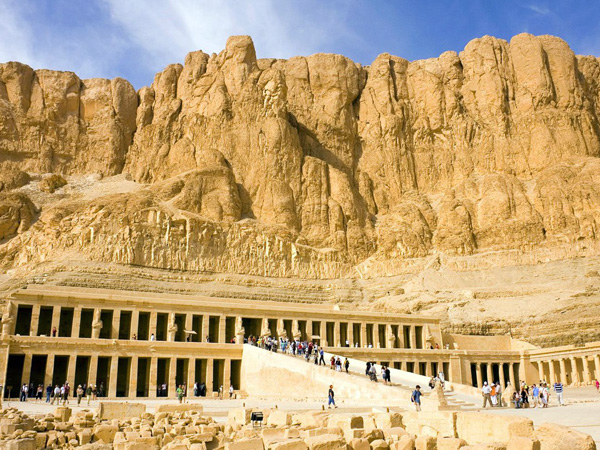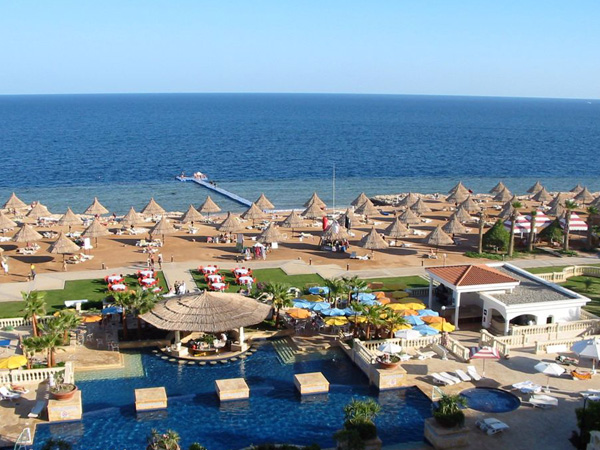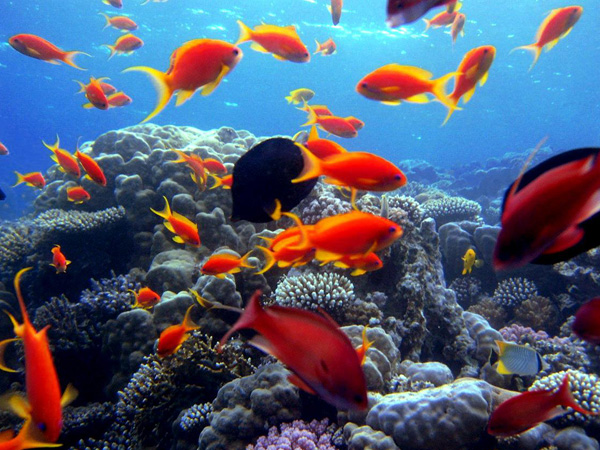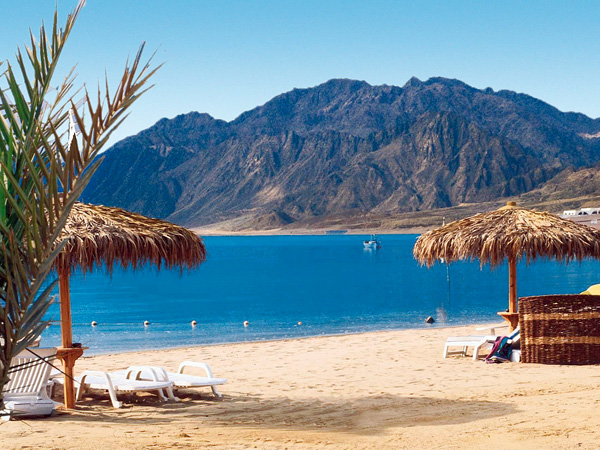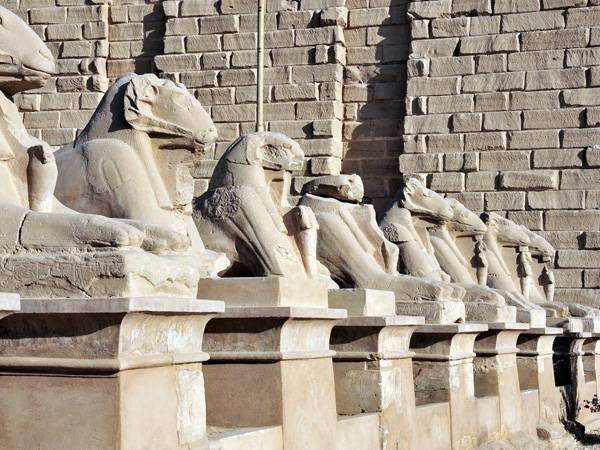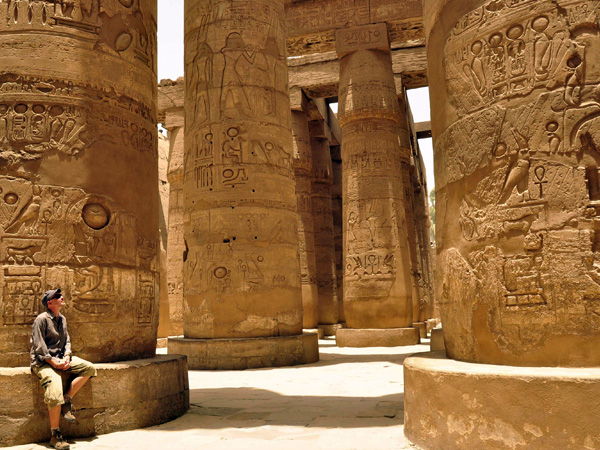A Glimpse of South & North India
Price starting from
$1495Per Person
Prices are quoted in US Dollars per person per trip.
Trip Duration :
13 Days / 12 Nights
Related Packages
There are no related packages.
DAY 01: ARRIVE DELHI
Your Sita representative will meet you in the arrival area of the airport after you clear immigration, baggage collection and customs formalities. Depart for your hotel and check in for your stay. Delhi is India’s capital and a major gateway to the country. Perhaps there is no other capital city in the world so steeped in history and legend as the Indian capital Delhi. It was the magnet, which drew the Mongols, Turks, Persians, Afghans, Mughals and the British, all of whom contributed to its glorious but turbulent past. The fascination with Delhi was such that even though it was abandoned many times, its rulers returned to it again and again rebuilding it at least seven times. Today, the twin cities of Old and New Delhi still intrigue Indians and tourists alike as the cultural and political capital of the largest democracy in the world.
Overnight: Delhi.
DAY 02: DELHI
After breakfast, your guide will give you an introduction to India and the tour. Begin the tour with a visit to unique yet fascinating experience of Old Delhi. Old Delhi was an ancient walled city. Mughal Emperor Shah Jehan in 1650 switched the Mughal capital from Agra to Delhi. Shah Jehan possessing an exquisite talent, especially in architecture, created the seventh city and in the process brought about Delhi's glorious renaissance. Start the day with a Cycle rickshaw ride through Old Delhi. Here you will see Red Fort, the most opulent Fort and Palace of the Mughal Empire. The fort is Shah Jehan's symbol of power and elegance, built behind red sandstone walls. Its main gate (Lahore Gate) faces Chandni Chowk, the perpetually congested avenue heading west from the Red Fort, is filled with twisting lanes, small streets and crowded bazaars. Also visit Raj Ghat, the memorial site of the Mahatma Gandhi; Jama Masjid, the largest mosque in India; and Chandni Chowk, the bustling and colorful market of the old city. Chandni Chowk was the commercial centre of Delhi in the old time and you will see it come alive in the morning as the trading day starts. As a complete contrast to Old Delhi, New Delhi was designed and built by the British in the 1920's-it's a city of wide boulevards impressive Government buildings, green parks and gardens. In 1911 King George V announced the transfer of the capital from Calcutta to Delhi. The King's architects, Lutyens and Baker, set in motion the Design and construction of Delhi's eight city - New Delhi. Lutyens designed an "Imperial City" having palatial-sized buildings set amid broad tree-lined avenues punctuated by Mughal style gardens, complete with fountains and shallow pools. It took 20 years to complete this immense undertaking only to have the British pack up and relinquish the subcontinent in 1947. You will visit two monuments from Delhi's past - Humayun's Tomb and Qutub Minar. Your drive takes you along the ceremonial avenue, Rajpath, past the imposing India Gate, Parliament House and the Presidential residence.
Overnight: Delhi
DAY 03 DELHI – AGRA BY CAR [148 Miles / 4 1⁄2 Hours]
Drive overland from Delhi to Agra, this morning. Once a small village on the banks of the Yamuna, Agra was transformed by two great Mughal monarchs, Akbar and his grandson Shah Jehan into the second capital of the Mughal Empire – Dar-ul-Khilafat, or ‘seat of the Emperor’ in the 16 marble, narrow galleys, bustling streets and small buggies, Agra retains the irresistible charm that made this the favorite city of the Mughals. Arrive Agra in the afternoon and check in for your stay. Afternoon, explore the tomb of Itmad-ud-Daulah. It sits on the opposite side of the Yamuna River from the Taj Mahal, and is sometimes called the Baby Taj because if its resemblance to the famous monument. The first structure built completely of marble and using extensive pietra dura inlay work, it is of particular interest that the main design elements of this tomb later inspired the architects of the Taj Mahal.
Overnight: Agra
DAY 04: AGRA
Visit Taj Mahal at Sunrise (Closed on Friday). Gates to the Taj open at 0600; horse carriage / battery buses will drop you to the gates. Shah Jahan built the peerless Taj Mahal in commemoration of his most favored wife, Mumtaz Mahal. Stricken with grief at her premature death, the emperor vowed to build her a tomb that surpassed any other in beauty. The best architectural and artistic talent in India and highly skilled craftsmen from Iran, Turkey, France and Italy worked for many years to create the most beautiful tomb in the world. Begun in 1631, it took 20,000 artisans and laborers to complete the mausoleum by 1653. Return to your hotel for breakfast.
Later, explore the impressive Agra Fort. On a bend of the Yamuna River, almost in the heart of the city, lies the great Agra Fort - the seat and stronghold of the Mughal Empire for successive generations. Approachable by two imposing gates and constructed of red sandstone, the citadel was built by the Mughal Emperor Akbar between the years 1565 and 1573. Encircled by a moat, this dramatic city within a city was the palace of three emperors, Akbar, Shah Jehan and Aurangzeb, each of whom made significance in the 17th century. A world of contrasting edifices of red sandstone and white contributions to the wonderful architecture of the inner buildings – a combination of Persian (Islamic) and local Hindu styles. Afternoon at leisure.
Overnight: Agra
DAY 05: AGRA - JAIPUR BY CAR [150 Miles / 6 Hours]
Onward to the city of incredible Taj Mahal
En route Agra, Fatehpur Sikri After breakfast, drive overland through local villages, towards Jaipur, stopping en route to explore the deserted hill-top city of Fatehpur Sikri - City of Victory. Built by Emperor Akbar as his capital and palace in the late 16th century as an act of gratitude to a penniless saint, this splendid red sandstone city was inexplicably abandoned just fourteen years later. Wandering among the beautifully preserved palaces and red sandstone courtyards it is not hard to take yourself back in time to the days of imperial splendor when the Mughal emperor rode triumphantly through the Bulund Darwaza or Gate of Magnificence. Towering above the courtyard of the mosque and dominating the city, it is the largest gateway in the world. Continue your journey to Jaipur, driving across the increasingly dry farmlands of northern India, arriving at your hotel in the early evening. Jaipur (City of Victory) was founded by Maharaja Sawai Jai Singh II in 1727. It is the only city in the world symbolizing the nine divisions of the Universe through nine rectangular sectors sub-dividing it. The architect who formalized the city’s plans on the Shilpa Shastra, the epic Hindu treatise on architecture, mixed it with the sublimity of the Mughal and Jain influences of those times. The city was painted pink in 1853 in honour of the visit by Prince Albert. Except for the busy traffic of bicycles, cars and buses, little has changed.
Overnight: Jaipur
DAY 06: JAIPUR
Set off in the morning, traveling outside the city, towards the Amber Fort. An Elephant Ride from the base to the main gate will enhance your experience of reaching up to the Fort (if unavailable, this will be done by jeeps). This beautiful fortified palace was once the capital of the state of Jaipur (until 1728 AD) and the capital of the powerful princes of Jaipur. Among the best hilltop forts in India, with stern exteriors of white marble and red sandstone that seem to grow out of the rugged hills, the Amber Fort has mighty gates leading to beautifully decorated temples, huge ornate halls palaces, pavilions and gardens. The architecture is a combination of both Mughal and Rajput styles, and the chambers and hallways of the palace are decorated with paintings depicting hunting scenes, intricate carvings, mosaics and detailed mirror work. Explore the city this afternoon, beginning at the Jantar Mantar, an observatory built by Sawai Jai Singh ll in the 18th century. The Maharajah, a scientist as well as an astronomer, had the principles of Euclid translated into Sanskrit. One of the most remarkable sites in Jaipur, the Jantar Mantar has fourteen major geometric devices for measuring time, predicting eclipses and tracking stars and planets. Go on to the City Palace built within the fortified area of the original city, with one of the finest monumental entrances in India. The Palace is now principally a museum housing a collection of great treasures, including miniature paintings, carpets, royal garments and other interesting objects from Jaipur's intriguing past. The former royal family retains a part of the palace for their personal use. Hawa Mahal, or the The Palace of the Winds, is a beautifully designed facade built in 1799 by Maharajah Sawai Pratap Singh, to extend the zenana, or womens’ chambers of the City Palace. Five stories in height, and built of red and pink sandstone highlighted with white quicklime, it is thought that the women of the royal harem used the many casements to observe everyday life in the street below without being seen. (Rajput women traditionally observed strict ‘purdah’.) The side facing the street outside the palace, has 953 small windows and the breeze (hawa) which circulates through these windows gives the palace its name, and keeps it cool even in the hot summer months. Remainder of your time is at leisure, with time to relax, explore the colourful markets.
Overnight: Jaipur
DAY 07: JAIPUR /MUMBAI/ COCHIN BY DOMESTIC FLIGHT
In the morning fly to Mumbai. You will deplane in Mumbai and connect internally for Cochin. Upon arrival, you will be transferred to the hotel. Cochin (Kochi) is spread across islands and promontories in a stunning location between the Arabian Sea and the Backwaters. The city was founded in 1341 when a flood created a natural safe port, which became the principal harbour for Malabar coast’s spice trade. Cochin was on the main trade route between Europe and China. The rulers invited people of various religions to settle here, attracting the Jews and the Christians who built places of worship and their own communities. Remainder of your time is at leisure.
Overnight: Cochin
DAY 08: COCHIN
Take a tour of the city visiting the Dutch Palace, which has some of India’s most beautiful murals, the Jewish Synagogue in the heart of Jew Town and the cantilevered Chinese fishing nets. See St. Francis Church where Vasco da Gama was originally buried and the Santa Cruz Church with its pastel colored interior and carved wooden panels. Also, visit the Hill Palace Museum, which displays Royal memorabilia, paintings, carvings and arms. In the evening visit a local theatre to experience Kathakali performance. Kathakali literally meaning "story dance" is the pantomimic dance drama, the dancing and the acting being blended together into an inseparable form. It is a combination of facial expressions and body movements, which brings out the thought and emotion of the character.
Overnight: Cochin
DAY 09: COCHIN – ALLEPPEY BY CAR [35 Miles / 1 1⁄2 Hours]
ALLEPPEY - KUMARAKOM BY: CRUISE
After breakfast, drive overland through the scenic plantation towards Alleppey. Also called Alappuzha, Alleppey is a pleasant easy-going market town surrounded by coconut plantations. With its large network of canals, it is a major center for backwater cruises and the venue for spectacular snake boat races. The town is the headquarters of Kerala’s coir industry and also important for cashew nut processing. Upon arrival, transfer to jetty to board your private houseboat. Spend a lazy afternoon cruising the backwater canals through the Vembanad Lake, towards Kumarakom. On this river cruise, you will glimpse of otherwise inaccessible rural life in Kerala along the backwaters. The houseboats of today - huge, slow moving, exotic barge used for leisure trips - are the reworked kettuvallams of olden times. The original kettuvalloms were used to carry tonnes of rice and spices - a standard kettuvallom can hold up to 30 tonnes - from Kuttanad to the Kochi port. The kettuvallam or ‘boat with knots’- was so called because the entire boat was held together with coir knots only - not even a single nail is used during the construction. The boat is made of planks of jack-wood joined together with coir. This is then coated with a caustic black resin made from boiled cashew kernels. With careful maintenance, a kettuvallom can last for generations. While most boats are poled by local oarsmen, some are powered by a 40 HP engine. Lunch will be served on board the houseboat. Upon arrival, check in for your stay. The tourist village of Kumarakom lies in the scenic backwater area, on the shore of the pleasant Vembanad lake, 16 km away from Kottayam. Here an old rubber plantation around the lake has been developed into a bird sanctuary. A path goes through the swamp to the main nesting area, while the island in the middle of the lake can be reached by boat.
Overnight: Kumarakom
DAY 10: KUMARAKOM
Today is at leisure, with time to relax, explore the pristine environment. You may indulge in Ayurveda, relaxing massages; rejuvenation therapies offered by your resort OR avail one of the optional local excursions.
Overnight: Kumarakom
DAY 11: KUMARAKOM - COCHIN BY CAR [56 Miles / 2 Hours)
COCHIN – MUMBAI BY: DOMESTIC FLIGHT
After breakfast, drive overland towards Cochin airport and fly to Mumbai. Upon arrival, assisted transfer to your hotel. The history of Mumbai or Mumbai as it is now known is the story of an incredible transformation from its foundation to its present day. The British built it expressly for trade and over the years it changed hands from the fishing village of the Kolis, through the Portuguese conquest, to Catherine of Aragon who took the seven islands of Mumbai as her dowry to Charles II of England. Mumbai is the Gateway to India, commemorated by a monument of that name built to mark the visit of King George and his consort, Mary. Today, Mumbai is India’s premiere commercial and financial city and is ever on the move.
Overnight: Mumbai
DAY 12: MUMBAI
Take an excursion to the island of Elephanta (closed on Monday). The island of Elephanta is an hour away from Mumbai by motor launch. The cave temples here were excavated between the 5th and 8th centuries AD are famous for their magnificently sculpted panels. The best known is the one that depicts the Maheshmurti – a three – headed image of Lord Shiva, which signifies the creator, preserver and destroyer of this universe as per Hindu mythology. The Portuguese named this island after a large stone elephant that was found near the landing. The elephant now stands at the Victoria and Albert Museum on the mainland.
In the afternoon, visit the Prince of Wales Museum built in grand Indo Saracenic style, drive past Marine Drive, Mumbai’s most popular seaside promenade, and see the Kamla Nehru Park and Hanging Gardens on the slopes of the Malabar hills, offering a nice view of the marine lines and the Chowpatty beach. Visit the Jain temple, Mani Bhawan where Mahatma Gandhi used to stay, and the Dhobi Ghat. Also, drive past the Flora Fountain, the colorful Crawford Market and Victoria Terminus train station.
Overnight: Mumbai
DAY 13: DEPART MUMBAI
In time, assisted transfer to the international airport to board your homebound flight.
INCLUSIONS:
- Arrival & departure transfers
- All sightseeing with an English Speaking Guide
- All currently applicable taxes, tolls, parking fees, and service tax
- All entrance fees to sites and monuments.
- Rickshaw ride in Delhi
- Tonga ride in Agra
- Elephant ride at Amber Fort
- Kathakali Dance Drama in Cochin
- Twelve nights hotel accommodations at 'First Class hotels' mentioned below including taxes, service charge and buffet breakfast
NOT INCLUDED:
- International airfare
- Domestic Airfare: (Jaipur -Mumbai – Cochin – Mumbai) estimated at $400/person
- Passport and Visa fees for India
- Any gratuities
- Any Insurance
- Any meals or options not mentioned in the itinerary
- Expense of personal nature like laundry, telephone/fax calls, alcoholic beverages, camera/video camera fee at monuments, medical expenses, airport departure tax etc.
First Class Hotels to be Used:
- Delhi: Holiday Inn-02 Nights
- Agra: Trident-02 Nights
- Jaipur: Trident-02 Nights
- Cochin: The Gateway Hotel-02 Nights
- Kumarakom: Backwater Ripples-02 Nights
- Mumbai: Vivanta by Taj President-02 Nights

